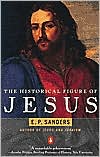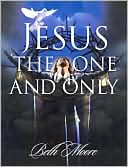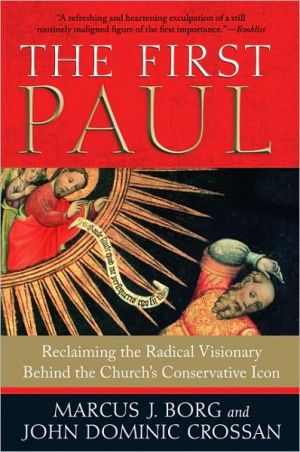The Historical Figure of Jesus
"Provocative and readable...A remarkable achievement."—Jaroslav Pelikan, Yale Univ.\ "No one in our generation is more broadly and deeply prepared than Sanders to tackle the daunting array of problems confronting the historical Jesus. This book will become the standard against which future reconstruction of the historical Jesus of Nazareth will be compared."—David Dungan, Univ. of Tennessee, Knoxville.\ "For Professor Sanders, Jesus is a well-authenticated figure about whom we know a...
Search in google:
No one can deny the importance of Jesus in world history, but more attention is paid to his influence as a religious figure than to his historical personage. Distinguishing between what we know about Jesus using historical research and mere inferences, this book attempts to present all aspects of his life and thought, including his activities, his teaching, his conflicts with others, and his death. Includes a preliminary sketch of Jesus's life and times; a brief account of the politics in first-century Palestine; a few points about Judaism; and the difficulties inherent in source material. 337pp. Publishers Weekly What, if anything, can be known with certainty about the life and work of a first-century itinerant preacher named Jesus of Nazareth? Since the 19th century, scholars have attempted to answer that question; and out of their studies, Jesus has emerged variously as a Cynic philosopher (Crossan), a ``marginal Jew'' (Maier), an apocalyptic preacher (Schweitzer), a teacher (Robbins) and a magician (Smith). Sanders (Jesus and Judaism) portrays Jesus as a miracle worker and eschatological prophet whose deeds point to a coming Kingdom of God where good will reign over evil. Sanders's book is a masterful historical reconstruction of the political, social and theological context of the life of the enigmatic Nazarene. The first half of the book provides a detached examination of late Judaism and the Hellenic world into which Jesus came, as well as an exploration of the authenticity of the gospel accounts of Jesus's life. Following such introductory matters, Sanders recounts the gospel narratives in an attempt to separate myth from history and to determine how much we can actually ``know about the historical figure of Jesus.'' The result is a thorough, accessible and conservative study that should have a wider appeal than other recent work on the historical Jesus. (Sept.)
Map of Palestine in the Time of JesusList of AbbreviationsChronological TablePreface1Introduction12An Outline of Jesus' Life103Political Setting154Judaism as a Religion335External Sources496The Problems of the Primary Sources577Two Contexts788The Setting and Method of Jesus' Ministry989The Beginning of Jesus' Ministry11210Miracles13211The Coming of the Kingdom16912The Kingdom: Israel, Gentiles and Individuals18913The Kingdom: Reversal of Values and Ethical Perfectionism19614Contention and Opposition in Galilee20515Jesus' View of His Role in God's Plan23816Jesus' Last Week24917Epilogue: The Resurrection276Appendix I: Chronology282Appendix II: Jesus' Disciples291Notes292Index of Passages315Index of Names and Subjects329
\ Publishers Weekly - Publisher's Weekly\ What, if anything, can be known with certainty about the life and work of a first-century itinerant preacher named Jesus of Nazareth? Since the 19th century, scholars have attempted to answer that question; and out of their studies, Jesus has emerged variously as a Cynic philosopher (Crossan), a ``marginal Jew'' (Maier), an apocalyptic preacher (Schweitzer), a teacher (Robbins) and a magician (Smith). Sanders (Jesus and Judaism) portrays Jesus as a miracle worker and eschatological prophet whose deeds point to a coming Kingdom of God where good will reign over evil. Sanders's book is a masterful historical reconstruction of the political, social and theological context of the life of the enigmatic Nazarene. The first half of the book provides a detached examination of late Judaism and the Hellenic world into which Jesus came, as well as an exploration of the authenticity of the gospel accounts of Jesus's life. Following such introductory matters, Sanders recounts the gospel narratives in an attempt to separate myth from history and to determine how much we can actually ``know about the historical figure of Jesus.'' The result is a thorough, accessible and conservative study that should have a wider appeal than other recent work on the historical Jesus. (Sept.)\ \ \ \ \ Library JournalSanders neither pronounces on the Jesus of faith nor sets his view against later Christian dogma in this study of "Jesus the human being." Thus he closes the door at the outset to the polemic passion such agendas can inspire (as in Uta Ranke-Heinemann's Putting Away Childish Things, LJ 6/1/94). Beginning with a brief look at Jesus' life and its religious/historical context, Sanders next evaluates source materials and then-in the bulk of the book-explores what he thinks we can confidently say about Jesus' miracles, for instance, or his attitudes on the kingdom of God. Regarding the latter, Sanders believes (unlike John Dominic Crossan in Jesus, LJ 12/93) that "picking and choosing among the sayings" is misguided and opts instead to "calmly survey all sayings," seeking apparent convergence. Highly readable, this is a key addition to literature on the historical Jesus. For academic, theological, and larger public libraries.-Elise Chase, Forbes Lib., Northampton, Mass.\ \








